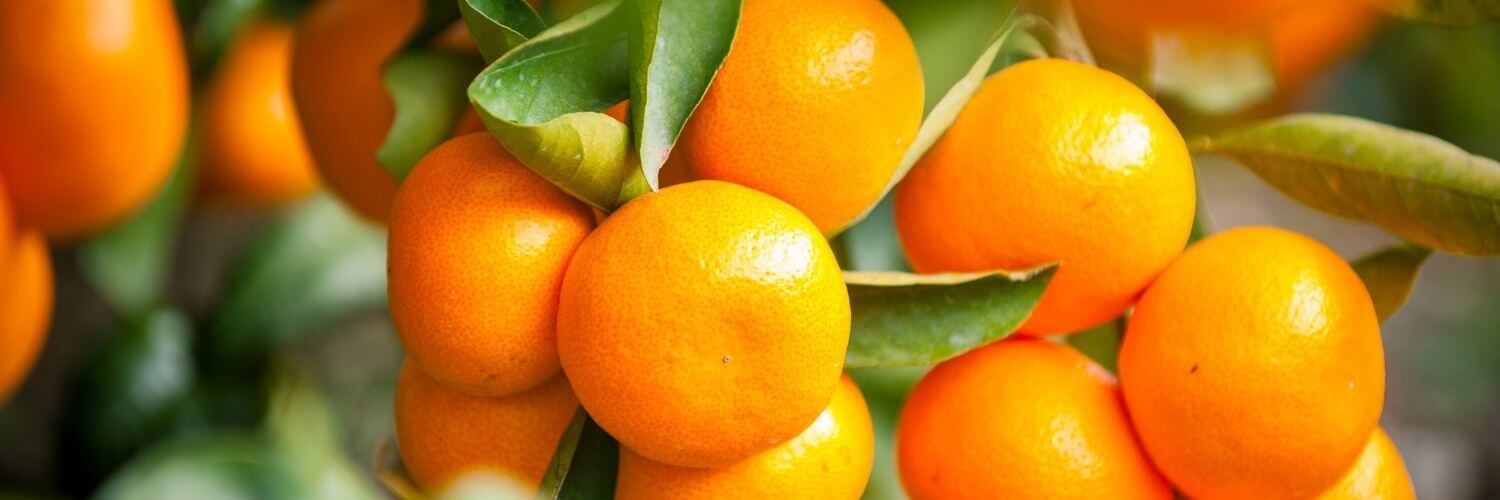
Mikan is one of the most popular fruits in Japan. It looks like mandarins, but the flavor is slightly different. Find out more about this particular kankitsu citrus of Japan.
Japanese Kankitsu, especially yuzu citrus, is getting popular in America. But do you know mikan, the king of Japanese Kankitsu!? The word itself translates to orange in English. However, just like mandarin orange is different from Cara Cara or navel oranges, mikan has its uniqueness. Let’s find out what it is, and you’ll surely want to try some soon!
What is Mikan (Japanese Mandarin)?
Mikan is a type of orange originating in the south of Japan about four hundred years ago, and its official name is “Unshiu Mikan.” In the United States, it’s often sold as Japanese mandarin or Satsuma oranges. Its peak season is from late September to February, primarily produced in Wakayama and Ehime prefectures.
Mikan changes its flavor throughout its season from September to March. The early season ones in September are extremely juicy but have a bit of tartness. On sale from October to December, mid-season kind packs both sweetness like navel oranges and sourness like grapefruit. Lastly, the late-season ones from January to March are extremely sweet.
Eating mikan in the wintertime is every Japanese family’s winter tradition. Not only it’s easy to peel, but it also packs a lot of vitamin C much needed in the cold and flu season. If you eat two a day, you get all of your vitamin C for the day!
How is Mikan Different from Other Mandarins?
Mikan is a kind of mandarin orange. As you may know, there are many types of mandarin oranges available to eat. Let’s take a look at other famous mandarin oranges to compare how this Japanese orange is different from them.
Mandarin

Mandarin oranges are much smaller than navel oranges and usually sweeter. It looks almost exactly the same as mikan, but the flavor is slightly different. Mandarins tend to have a lighter flavor and don’t taste as bold.
Tangerine

Tangerine is a distant cousin of mikan, and its flavor is similar with a combination of sweetness and tartness. Compared to mandarins, tangerines have more reddish-orange skin, and the skin is thicker than mikan but more manageable to peel than navel oranges.
Clementine

Originally from Algeria, it’s a type of mandarin orange. However, clementines are smaller in size yet highly fragrant compared to mikan. It’s sweet and peels easy as well.
Sumo Citrus

Sumo citrus, also known as dekopon in Japan, is an oversized version of mandarin orange from Japan. Not only is it humongous, but it also has a “bump” on top. The flavor profile is also significant, with juicy and sweet flavors!
How to Eat Mikan?
In Japan, mikan is a typical fruit during wintertime. Of course, eating fresh is exceptionally refreshing, but there are many products made with mikan that you can try! For example, with this salt-preserved sauce, you can elevate your everyday dish in no time. There’s a tangy version of the same sauce, made with unripe fruits that would have been thrown out. If you want to try marinating fish or meat with mikan, this easy-to-use marinade is a perfect way for you to try something new!


Can’t find fresh mikan near you? No worries! You can use this powder to enjoy the flavor of mikan in any dish you’d like. In addition to flavoring yogurt, ice cream, and baking goods, you can even use this powder to make a marinade for savory dishes.
